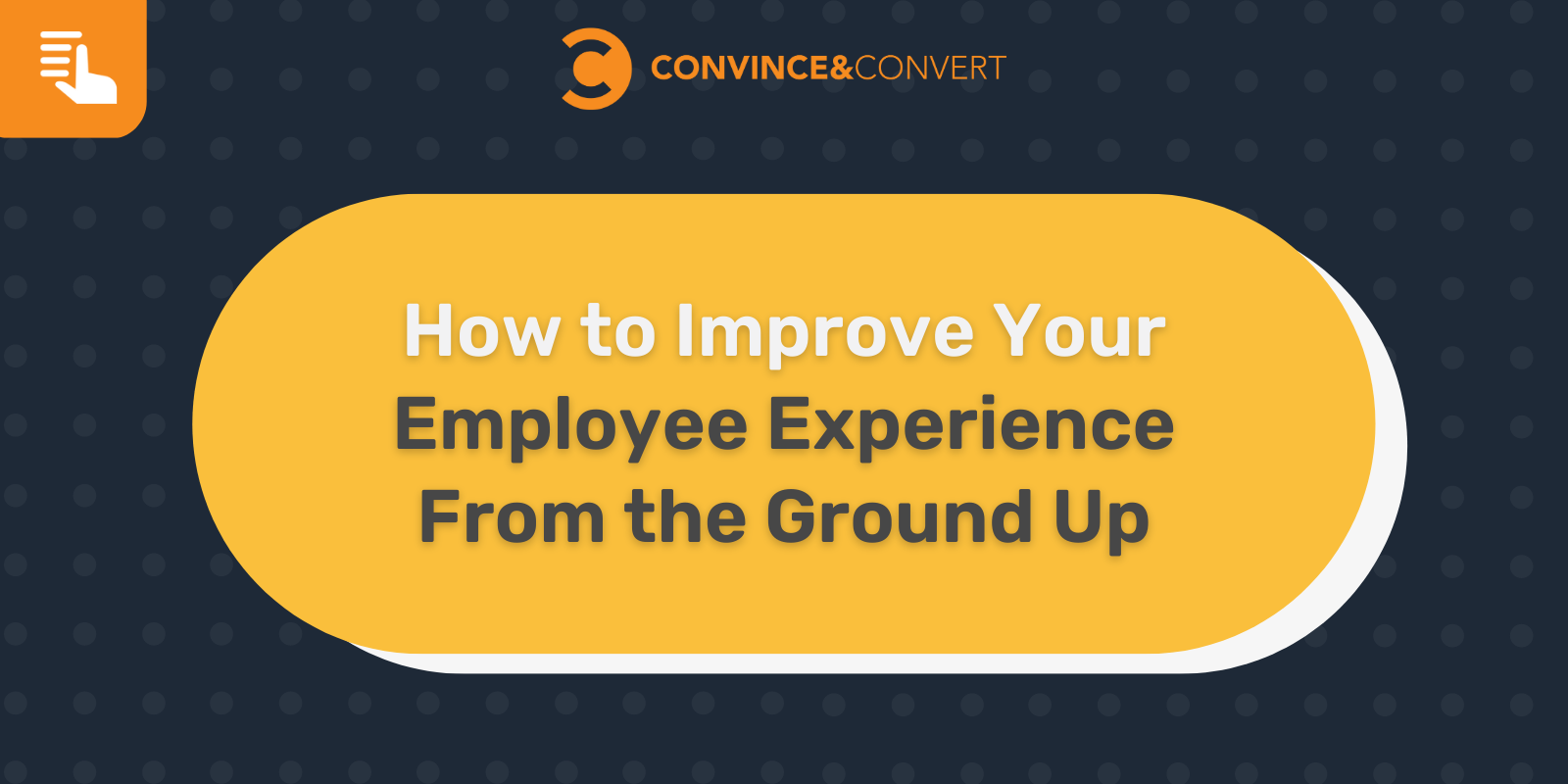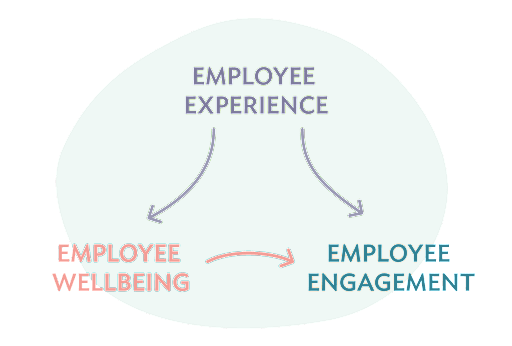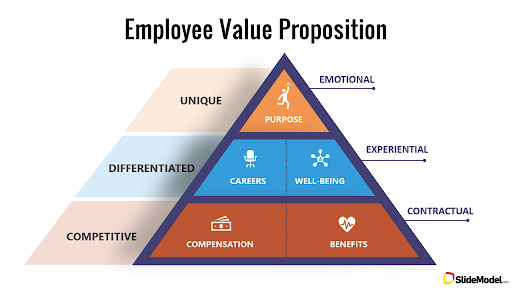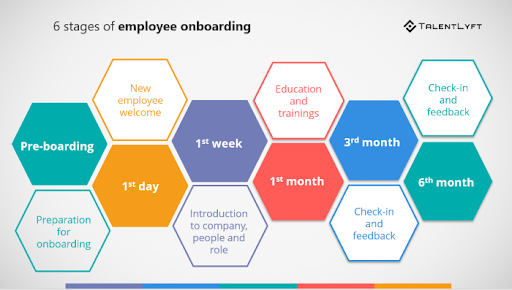
We’ve all been there, stuck in a job where management treats you like a number, not a person. It’s a soul-sucking feeling that can make even the most passionate employee hate coming to work.
The last thing you want as a manager or executive is for your employees to dread coming to work daily. After all, a happy employee is a productive employee.
That’s why a great employee experience is vital to any workplace looking for better business outcomes.
But what is employee experience, and how can you improve it?
What is Employee Experience (EX)?
The employee experience is the sum of all interactions an employee has with your company, from the recruitment process to their day-to-day work life and beyond.
Employee experience goes beyond employee satisfaction. It’s everything about their journey with your company and the experience of their time with you, including interactions with other co-workers and management.
What is the difference between Employee Experience and Employee Engagement?
Employee engagement refers to the emotional connection that an employee feels towards their work and company.
Employee experience and engagement feed into each other. A positive employee experience leads to engaged employees. If your employees have an emotional connection to their work, they are more likely to have a good experience there.
Therefore, if you see problems in one, the issue is usually related to both. And chances are, it’ll affect employee well-being, which in turn drives down satisfaction.

(Source: CultureAmp)
Why does Employee Experience matter?
Employees are the number one advocates for your business. A great employee experience can lead to a domino effect of benefits for your company, such as:
- Increased employee productivity
- Improved employee retention rates
- Reduced employee turnover rates
- Enhanced customer satisfaction
- Enhanced brand reputation and advocacy
It’s a no-brainer – when people enjoy their work, they’ll put their all into it and be happy to come to work every day. A great employee experience is the ticket to maxing out productivity.
A report by IBM and Workhuman found that companies scoring in the top 25% on employee experience see a 3x return on assets and 2x on sales when compared to companies in the bottom quarter.
Bad employee experience, on the other hand, can have a huge effect on your brand and your company’s performance.
(Here’s a breakdown of how great employee experience gets you amazing customer experience.)
And when your employees advocate for your workplace, you’re also sure to attract more talent and increase retention.
Designing an Employee Experience Strategy
There’s no one-size-fits-all solution to improving employee experience.
Your company’s EX strategy should be unique and built to reflect your company’s:
- Vision
- Purpose
- Culture
- Business model
These things should be clearly communicated throughout the employee journey. A powerful and productive employee experience should involve every part of the employee lifecycle, from recruiting, onboarding, and even their exit.
But constructing an employee experience strategy isn’t just about communicating your company’s ethos to your employees. It is also about addressing their needs.
An employee’s core needs in the workplace are:
- To be treated with respect.
- To feel like they are valued.
- To have a clear idea of their role in the company.
- To have access to the resources they need to do their work.
- To promote their well-being.
Your employee experience strategy should aim to address these needs in all stages of the employee journey.
Stage 1: Recruiting
The employee journey starts with recruiting.
This is an important opportunity to set the tone and expectations for what it’s like to work at your company.
In order to attract top talent, your company’s employee value proposition (EVP) should be communicated from the very beginning of the recruiting process and attractive to potential employees. Your EVP is a combination of the work environment, culture, development opportunities, and more that sets you apart from other companies and makes your company an attractive place to work.
Suppose your company has a less-than-sterling reputation that might hamper recruiting future employees. In that case, reputation management software can help turn it around to attract top talent and simplify the recruiting process.

(Source: SlideModel)
An EVP can consist of contractual, experiential, and emotional factors. Selling your prospective employee on these factors is how you advertise your overall employee experience.
Some things you can do to communicate your EVP during recruiting are:
- Use employee testimonials in job postings and on your website
- Promote your company culture on social media
- Participate in employee branding initiatives like Glassdoor’s Best Places to Work or other company review sites.
This is also a good time to consider diversity in your workplace. A diverse workforce has been shown to lead to increased creativity and innovation, so it’s important to consider how you can make your workplace attractive to a wide range of people.
Some ways include communicating policies in your workplace that ensure inclusivity, such as flexible work arrangements, employee resource groups, and transparency in pay to your prospective employees.
Making these standards clear upfront also lets you attract the kinds of employees who will enmesh well into the existing team and contribute meaningfully to the other workers’ employee experience too. Good people = good vibes.
You can also use a recruitment CRM to manage your entire recruitment process and keep all the candidate records and notes handy all the time.
Stage 2: Onboarding
The onboarding process is a crucial time for setting the tone of the employee experience.
This is the employee’s first impression of the company, and it’s important to make sure that they feel welcomed, comfortable, and prepared for their role.
Some examples of things you can do to improve the onboarding process are:
- Make sure the employee has all the resources they need before their first day.
- Have a designated point person for questions and concerns.
- Give a tour of the office and introduce them to their team.
- Set up regular check-ins throughout the employee’s first few months.
The onboarding process should go beyond the first few days. Giving the new hire time and support while they learn the ins and outs is vital to employee experience.

(Source: TalentLyft)
It is important to affirm the employee’s decision to join your company. Can they see that the claims you made about the company are true? Will the promises you made to them be fulfilled?
Just like in a new marriage, your employee needs to feel like they are being treated well and that you are living up to your end of the bargain. The tone you set in their onboarding period will define the rest of their employee experience at your company.
Stage 3: The Work
The work itself is, of course, the most important part of the employee experience.
Meaningful Work
Employees need to feel like their work is meaningful, and that they are doing something that contributes to the company’s success. They need to have a clear understanding of their role in the company, and how it fits into the bigger picture.
Some things you can do to ensure that employees feel like their work is meaningful are:
- Encourage employee input and feedback on projects.
- Set clear expectations for roles and responsibilities.
- Help employees see how their work contributes to the company’s success.
- Encourage employee development through training and mentorship opportunities.
Performance Management and Review
When it comes time for performance reviews, employees must feel that their work is assessed fairly and that there is room for growth. Get rid of the rankings.

(Source: Scott Adams)
Performance reviews should be an opportunity to give constructive feedback and identify areas for improvement rather than simply a way to grade employee work.
Stage 4: Development
Professional development is vital to a positive employee experience. Employees need to feel like they are growing in their roles and that there is an opportunity for advancement within the company. Providing new challenges and fostering growth in employees has a major effect on employee engagement.
Some examples of things you can do to invest in their development:
- Provide training and development opportunities.
- Cover the cost of professional development courses and conferences.
- Encourage employees to take on new challenges.
- Mentor them or assign a mentor to help guide employee development.
- Encourage mentorship relationships between more experienced and newer employees.
It’s important to remember that employee development is not a one-time event. It’s an ongoing process that should be woven into the fabric of your company culture.
The workplace environment shouldn’t leave your employees feeling trapped in one role. It should encourage them to innovate and create new solutions.
(If you’re in marketing, here are some ideas on how to do that.)
Stage 5: Exit
The employee experience doesn’t end when an employee leaves the company. In fact, the way you handle employee departures can have a lasting impact on your company’s reputation.
It’s important to conduct exit interviews with departing employees so that you can understand their reasons for leaving and identify any areas that need improvement. Exit interviews should be conducted in a respectful and professional manner.
Things to keep in mind when conducting exit interviews:
- Be prepared with questions that will help you understand the employee’s reasons for leaving.
- Listen carefully to what the employee has to say.
- Avoid arguing or getting defensive.
- Use the information from the interview to improve your employee experience strategy.

(Source: Indeed)
When it comes to this stage of the employee lifecycle, it’s important to remember that the goal is to part ways on good terms. Employees who leave the company should feel that they are valued and that their contributions are appreciated.
This also affects the employee experience of those who aren’t leaving.
Seeing a valued co-worker leave can be discouraging, so it’s important to reiterate your commitment to the employee experience and address any concerns that employees might have. Again, transparency at this stage is crucial to maintaining trust and employee satisfaction.
Communication is Key
Clear communication and follow-through are the most important factors in improving the employee experience. From the very beginning of the employee lifecycle, it’s important to set clear expectations and deliver on promises.
As employees move through their time with the company, they should be kept in the loop on company developments, changes, and news. Regular 1:1 meetings and performance reviews are a great way to do this.
But communication can’t be one-sided.
Employees need to feel like their voices are heard and that their feedback is valued. This can be done in several ways, such as:
- Encouraging employee input on company decisions.
- Conducting regular employee surveys.
- Acting on employee feedback in a timely manner.
Clear communication encourages transparency and fosters trust between employees and management. When there is trust, employees are more likely to be engaged and committed to their work.
Employee experience – and in fact, business – is all about investment and trust. Make sure that you’re investing in people, using your business and assets to build your employees rather than just using them to build your business. Cultivating people and fostering trust is the key to longer-lasting success.



